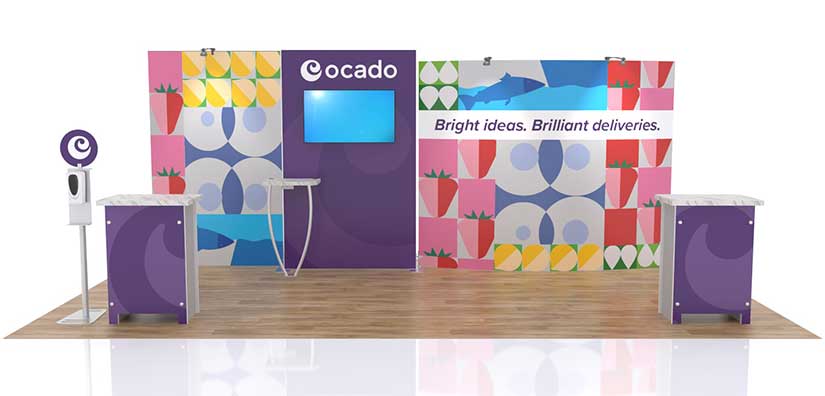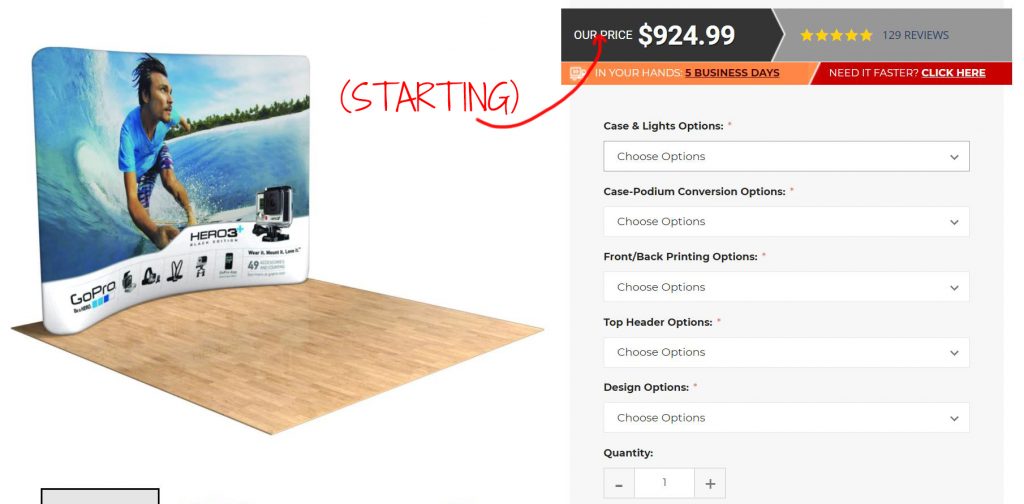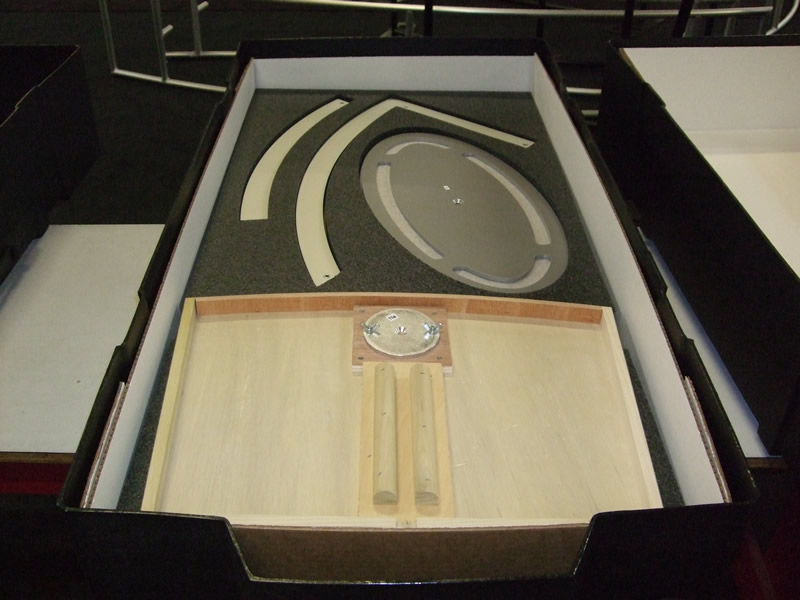Display Search / Trade Show and Event Tips / Displays and Exhibits /
6 Mistakes To Avoid When Buying a Portable Display

The proliferation of trade show display websites makes buying a portable display easy. Perhaps too easy. Many exhibitors, especially new ones, know little about display hardware. They see beautiful images of displays with great prices and the convenience of point and click. What arrives, however, may not match the pretty picture or the online description.
6 Mistakes To Avoid When Buying a Portable Display
Sadly “putting the cart before the horse” is a common mistake when buying an exhibit, regardless of the size or price. Displays buyers become fixated on size and price instead of asking the following:
- What are our marketing goals for the show or shows?
- Is this a short-term or long-term purchase?
- Will we need accessories like shelves, locking storage, tablets, or monitors
- And, who will be assembling the booth?
Once you’ve answered those questions, it’s time to start shopping. There are two options: an online display website or a local provider. Both can supply you with similar products and prices. Much will depend on your short and long-term trade show marketing plans and whether a supplier can support your evolving trade show program.
Avoiding the Most Common Portable Pitfalls
 #1. Too Good to Be True Prices. Otherwise known as the devil is in the details. We’ve all made this mistake. Many portable display websites show really low prices, which are merely the starting point. You then have to add graphics, accessories, cases, shipping which can increase the price as much as 5 to 10X.
#1. Too Good to Be True Prices. Otherwise known as the devil is in the details. We’ve all made this mistake. Many portable display websites show really low prices, which are merely the starting point. You then have to add graphics, accessories, cases, shipping which can increase the price as much as 5 to 10X.
Not all portable websites are constructed this way so it’s important to compare the “build a bear” pricing with the “what you see is what you get” pricing.
#2. Quality. Unlike cars or appliances or smartphones, there’s no Consumer Reports for portable displays. And let’s be honest, the rating system on most websites is suspect. Sure you can watch a video, which may or may not be helpful.

You might not like to hear this, but price is a pretty good guide. Higher-quality systems with a proven track record tend to cost more. They use sturdier frames, stronger connections, and better cases and packaging (but more on that later). Always ask about the warranty and return policy.
#3. Assembly. Assembly matters but probably not as much as you think. Some require tools. Others do not, which shouldn’t be the only determining factor when choosing a portable display. Is the assembly process intuitive? Are the parts labeled and numbered? How stable is the display when it’s done?
 Remember… you will be assembling the display multiple times over months or even years. Each time it should get faster and easier. If not, then the overall fit and finish may be suspect and/or the materials of questionable quality.
Remember… you will be assembling the display multiple times over months or even years. Each time it should get faster and easier. If not, then the overall fit and finish may be suspect and/or the materials of questionable quality.
#4. Graphics. Most portable systems rely on fabric graphics for the larger images (like the main backwall) and direct print graphics for smaller images (for counters or headers). If you’ve shopped for a TV recently, you know the same size screen can vary in price, often by several thousand dollars. Graphics vary too. Low quality graphics are printed on older machines, using thinner materials, and use less ink per square inch. They may look fine until you place them next to higher quality graphics, like the company in the booth next to you.
Just as important is the fit on the frame. It must be perfect or near perfect. Too loose and the graphic appears sloppy and cheap. Too tight and the images are distorted and fitting them to the frame is like putting pants on a sleeping bear.
#5. Replacement Parts. Assume you will misplace or break a display part at some point. Because you will. It happens. Be sure to ask:
- Are replacement parts available? Is there a catalog with prices?
- How long will it take to receive the replacement part?
- Is the replacement part guaranteed to fit?
Some portable systems are considered disposable by the manufacturer. If you lose a part, then your only option is to buy a whole new display. With others, getting a replacement part to match your frame is nearly impossible.
Better portable displays are designed and manufactured with exact-fit tolerances and interchangeable parts. Their parts are available via quick ship.
 #6. Packaging. Very few buyers consider packaging when buying a portable display. A HUGE MISTAKE!
#6. Packaging. Very few buyers consider packaging when buying a portable display. A HUGE MISTAKE!
Poor packaging contributes to lost parts, damaged components, dirty graphics, assembly frustration, and overall long-term satisfaction with a portable display. The vast majority of portable displays are shipped using temporary packaging like shrink-wrap, paper, disposable foam, and tape. These are all tossed away at the first show.
Some portable systems use reusable packaging, like foam inserts, nylon bags, and heavy-duty corrugated boxes. Everything has a spot and every item is protected during shipping. This ensures that the display looks new for much longer and makes it easier to assemble since the components are packed carefully and protected.
Purchasing a trade show display, regardless of the size or price, is a sales and marketing investment. If you’ve ever walked a trade show floor and said to yourself, “Seriously dude?!” then you know the harm a cheap portable display can do to your image. Consider meeting with an exhibit display professional to discuss your needs and marketing goals.
Contact Us
For more information about trade show or event marketing, give us a call or Contact Us. We welcome the opportunity to assist you with your next event.
Mel White
Classic Exhibits Inc.